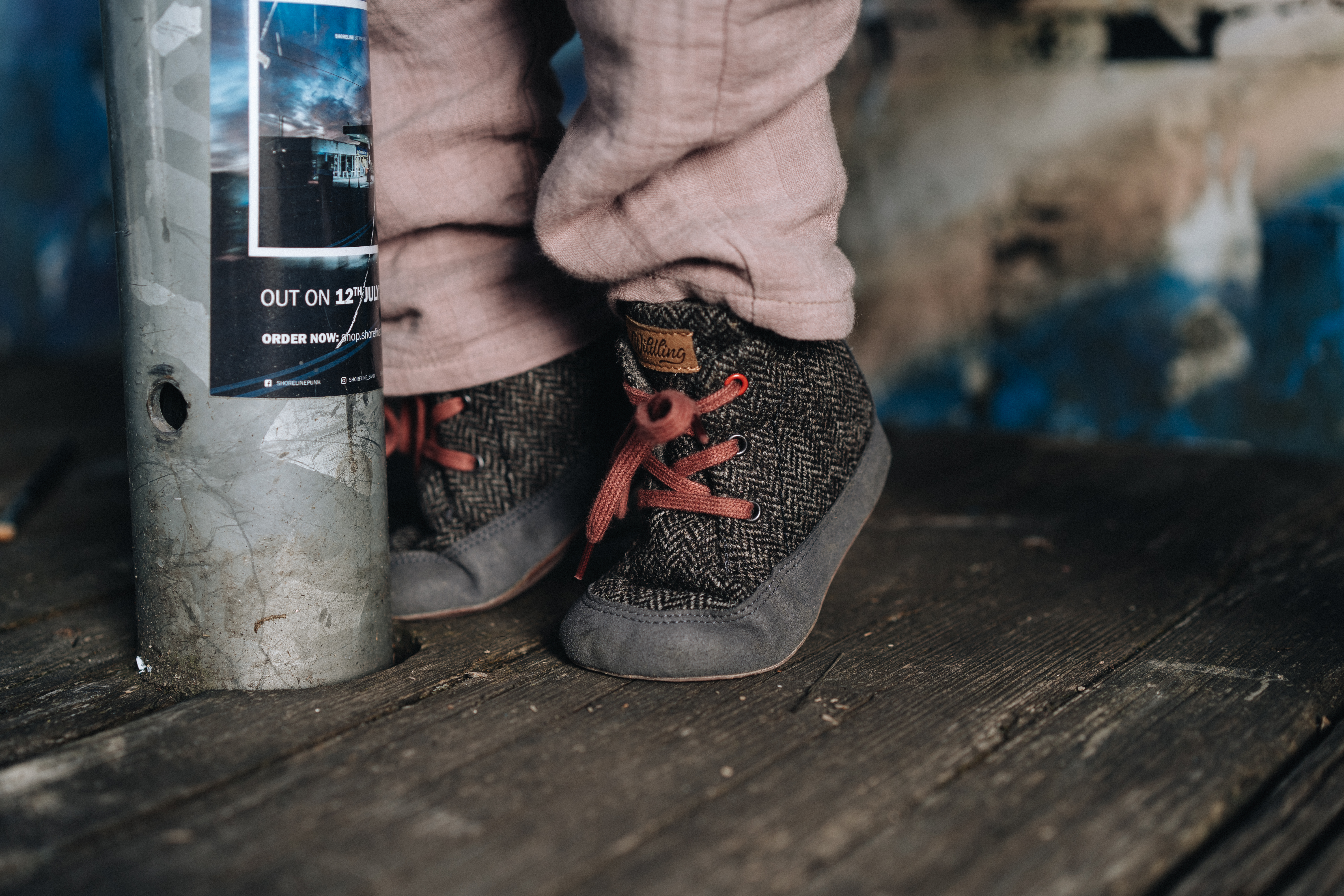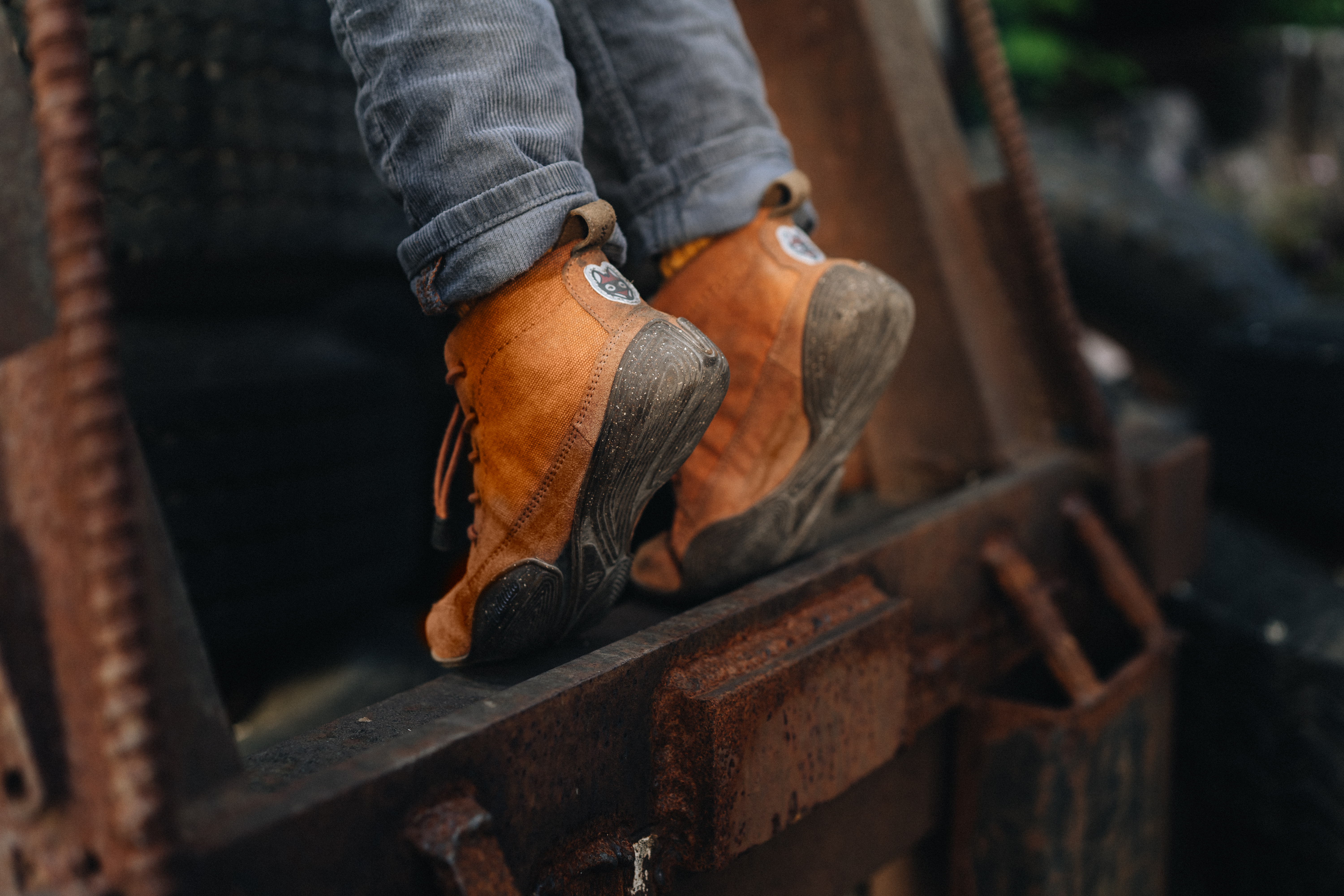“There’s no bad weather, only bad clothes” is a Scandinavian phrase that eco-parents take to heart. Outdoor exploration and free play are critical for not only children’s physical development, but for their emotional health as well. Walking barefoot in nature has been shown to be beneficial in these ways, but what about when this is simply not possible due to weather, safety, or sensory issues? Minimal shoes are the next best thing for the playground, the forest, the sidewalk, and everything in between!
What Are Minimal Shoes?
In recent years, “barefoot” or minimal shoes have increasingly grown in popularity, moving from the running paths to everyday life. But what exactly are they? Generally speaking, experts agree that this type of footwear is meant to approximate the bare foot, with minimal interference between the natural movement of the foot and the environment, while still providing some protection.
If the Shoe Fits...
Rather than the typically pointed and rigid designs of modern shoes, minimal shoes have a natural shape that mimics the anatomy of the foot. These shoes are typically highly flexible, with low heels, reduced cushioning and/or arch support, and a wide toe box. This design is intended to allow the natural movement of the foot while in motion, providing a closer connection to the environment. Minimal shoes are also made with lightweight fabric, such as the washi paper that makes up the most popular models of Wildling shoes. For winter footwear, wool is a breathable and comfortable material that helps keep feet at the perfect temperature. Durable, yet highly flexible, the soles are designed to provide input about the ground beneath you while protecting your feet from the elements and any hazards, such as rocks and sticks. All combined, these design elements of minimal shoes enable more natural movement with surprising benefits.
The Health Benefits of Wearing Minimal Shoes
When children are first learning to stand, climb, and walk, the learning process happens naturally - that is, without shoes. While the vast majority of us are born with healthy feet, by the time we reach adulthood it is a different story altogether. Between wearing constrictive shoes that limit how we use our bones and muscles and increasingly sedentary lifestyles, many adults cope with some form of chronic foot, hip, or back pain.
Minimal shoes will have you using your body in a different way. Wearing this type of shoe brings you into closer connection with the ground, naturally causing you to walk more mindfully. This supports the body’s natural feedback system, improving balance and body awareness, particularly in children. Gradually, the small muscles in your feet strengthen, your toes become more agile, and your foot arches will spread into a more natural position where they can do their jobs.
Evidence demonstrates that people who wear mainly minimal shoes have stronger and stiffer feet than those who wear traditional shoes with built-in arch support and restrictive toe boxes. This is why minimal shoes are made with highly flexible soles rather than rigid foot beds. Additionally, a reduced or absent heel lift can also help the Achilles tendon and calf muscles to lengthen. Over time, this helps us to develop an improved gait, posture, and balance, and possibly avoid joint problems in the future.
Switching to minimal shoes (as we outfit our children with them) is an opportunity to learn to walk again alongside them.

Connecting to Nature with Wildling Shoes
We recommend Wildling Shoes for the whole family in every season. The Akita shoe is made of wool, perfect for keeping your toddlers feet warm and cozy while you explore and forage on a nature walk. The importance of free-range play for children cannot be overstated - it promotes the development of balance, decision making, and imagination. Kids will love the flexible Wapiti shoe for climbing, running, jumping on playgrounds and natural obstacles alike. Parents can rewild too without compromising on style. We love the full range of shoes and sandals, especially the high cut North Wolf for the winter months ahead.
When we move more naturally, we feel more grounded and connected to the environment. Walking in minimal shoes leads to a more mindful approach to the outdoors and a more active lifestyle. Feeling the earth under your feet is part of exploring and connecting with nature, and each other.
Footprints That Make a Positive Impact
Eco-conscious parents know the value of a sustainably-made product, but definitions of what “sustainable” actually means can vary widely depending on the manufacturer. Wildling’s commitment to sustainability is woven into every shoe, encompassing ecological responsibility, fair trade, and climate justice to make a net positive impact on the planet and its people.
Wildling Shoes knows that sustainability begins with how raw materials are sourced and ends when the shoe itself is no longer usable (after a long life!) and must return to the environment. Transparency at every step of the supply chain is critical to ensure that materials (such as cotton, wool, hemp, paper, and linen) are responsibly sourced and processed, and that workers are treated and paid fairly. Giving back to nonprofits doing work on the frontlines of climate justice is also a priority. As such, Wildling Shoes recently became a member of the 1% For the Planet movement and is on the road of becoming a B-Corp certified company.

Walking Gently on the Earth, Together
The benefits of time spent outdoors cannot be overstated. It allows us to use our whole selves to explore and experience the natural world, motivating us to demonstrate care and commitment to our planet in every part of our lives. This winter, remember to get outside and feel the ground beneath your feet as a family.
You may also enjoy: Using the Five Senses to Plug into Nature, Why Children Need Nature for Future Well-Being, and Learning with the Head, Heart, and Hands.






